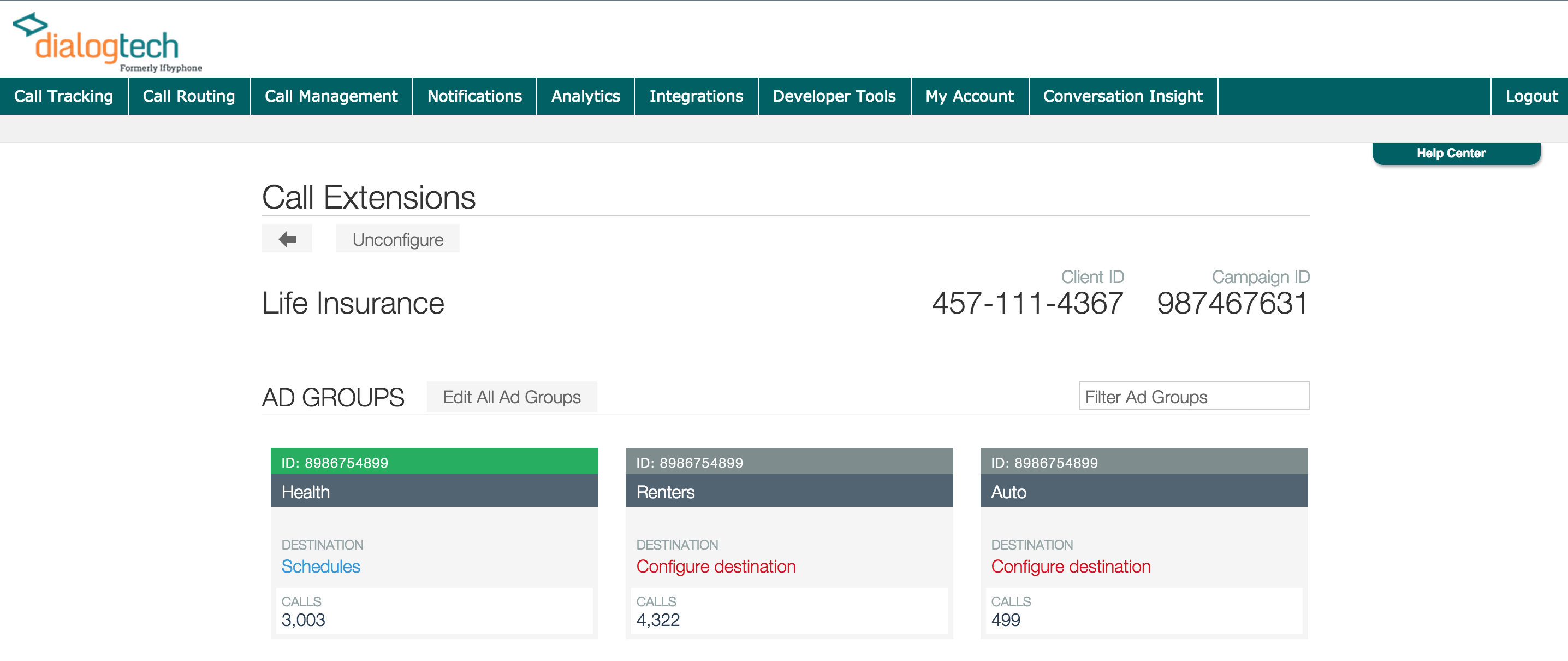Despite what you may think, most purchases are not made on a mobile phone. Well — not in the way you might expect in the age of the smartphone.
Three quarters of us use mobile devices to research what we want to buy before moving to a desktop device to make the purchase. The most recent research into mobile advertising backs this up, with 73 percent of people choosing to “look at” or “investigate” products based on a mobile ad, but not actually to engage with the advertisement or move to purchase.
But that’s not all, as infomercials are often proud of saying.
Many of us like to actually talk to a person before making our purchase, especially when it comes to restaurant bookings, hotels, travel, automotive, and other local services.
That’s right. Talk.
The problem this causes for marketers? Being able to track revenue attribution to that phone call.
Today, DialogTech has launched its Mobile Marketing solution to provide complete inbound phone call attribution, and real-time control, for mobile advertising sources. It also provides marketers with accurate keyword-level data for Google call extensions, helping businesses to really understand if their investment in advertising is paying off.
I asked Irv Shapiro, CEO and CTO of DialogTech, why the smartphone is better at helping consumers at the “top of the funnel.”
“Some mobile purchase use cases are simple and pose little risk to the buyer,” Shapiro said. “Ordering a taxi. Purchasing music. Buying airline tickets. But there are a host of considered purchases — things that are complex, infrequent, or expensive in nature — where buyers want more detailed information; life insurance, a new car, an online degree, or senior care services to name a few.”
These considered purchases create a more complex buying process.
“The path to purchase for these goods and services has more stops along the way across mobile, desktop and offline touch points,” Shapiro said. “Today, mobile can be a good way to create awareness at the top of the funnel, but when consumers get serious and dig in to do their homework, the desktop is a more efficient device.”
It isn’t simply the case that the buying process requires more complexity. Shapiro believes that there is another underlying issue.
“Many purchase transactions are still complex on mobile devices,” Shapiro said. “There are outliers — Amazon’s ‘buy with one click’ button comes to mind. However, the act of filling out a registration form with address information, credit card information, working through a multi-step checkout line … it’s just too cumbersome on a mobile device for many scenarios. For this reason people hop on a desktop or make a phone call.”
That phone call is simply a click away for most people, thanks to “click-to-call” features in mobile advertisements.
VB’s new Brands & Mobile Advertising: How to win report is available for
$499 on VB Insight, or free with your martech subscription
When Google first added the ability to allow consumers to call directly from an advertisement using their smartphones, the early results were impressive: 42 percent of people had clicked to call, and the average conversation length was an impressive six minutes.
Despite this native capability within Google, tracking revenue attribution across that and other platforms such as Facebook, Twitter, YouTube, and display ads continues to be an issue for marketers. And there are other issues too, such as allowing local offices to deal with nearby customers without losing the ability to track those interactions nationally.
In other words, it is tough marketing to a mobile audience, and especially tough when they want to talk to you.
DialogTech for Mobile Marketing is a comprehensive solution for tracking, controlling, and optimizing inbound phone calls generated from any mobile source, including popular mobile advertising channels such as Google, Bing, Facebook, Twitter, YouTube, display, mobile games/apps, email, and more.
It allows marketers to pinpoint exactly what mobile marketing source (including channel, campaign, advertisement, keyword search, website, app, email, video, etc.) drove each caller. It also optimizes the user’s mobile advertising strategy, focusing on what is actually driving revenue.
Importantly, it provides call analytics for Google paid search call extensions, including accurate keyword-level attribution data — information that can make the difference for any marketer that needs deep analytics into every caller and conversation.
Importantly, the solution allows for local call routing, an option that could be paramount for national organizations.
“Our customers use geo-location technology to determine a customer’s precise location using cell tower triangulation (callers must opt in to share their location),” Shapiro said. “The results of that lookup can then be used to route the caller to the closest store, dealer or location.”
That capability could be used to drive different campaigns to the call center dealing with that particular marketing effort.
“In essence, we provide our customers with the ability to create custom routing definitions and workflows to make sure the call gets to the best person in the organization to close the sale or service the customer,” Shapiro said.
 DialogTech has a few other tricks up its sleeve too.
DialogTech has a few other tricks up its sleeve too.
It includes Conversation Insight, a platform that records, transcribes, and analyzes every voice conversation, allowing marketers to run searches to pinpoint precise keywords and phrases that indicate caller intent and lead quality.
And it integrates caller analytics data with third-party applications such as bid management, CRM, and web analytics solutions.
As I discovered in my study of how people complain on social media to brands, there are entire generations of consumers that would rather continue the conversation in person or by talking with someone on the phone. Surprisingly, younger generations want this level of personal interaction more than most.
“Many big names in tech are embracing the call channel,” Shapiro said. “Facebook and Twitter — social platforms with user bases that skew younger — have both introduced call buttons to allow businesses to engage via voice with their fans and followers. Google’s total estimated conversions platform allows advertisers to incorporate conversion data from calls and in store visits, two channels where people can talk to someone.”
Google themselves are clear that if you include a click-to-call option, it will improve your chances of being found by a consumer.
As it says on the associated Google Adwords help page, ad extensions (such as the call extension) are factored into how Ad Rank is calculated. If two competing ads have the same bid and quality, the ad with the more relevant extensions will likely appear above the one without them.
“In terms of Google call extensions, it’s interesting to look at how Google’s ad formats have evolved over time,” Shapiro said. “What started as three-line text ads now in some cases can include call buttons, directions, maps, hours of operation, social media metrics, and customer reviews. The ad has essentially become the landing page in many cases.”
Mobile searches in the U.S. generated over 38 billion calls in 2014, and are expected to nearly double to 73 billion by 2018, according to leading research firm BIA/Kelsey.
“We believe the act of talking to someone is basic human nature. It’s what sets us apart as a species,” Shapiro said.
DialogTech for Mobile Marketing is available today.
VentureBeat's mission is to be a digital town square for technical decision-makers to gain knowledge about transformative enterprise technology and transact. Learn More


